
views
X
Trustworthy Source
Mayo Clinic
Educational website from one of the world's leading hospitals
Go to source
However, check with your doctor or physical therapist before doing any new exercises, especially if you’re recovering from tendonitis.
Stretching Your Calves and Tendons
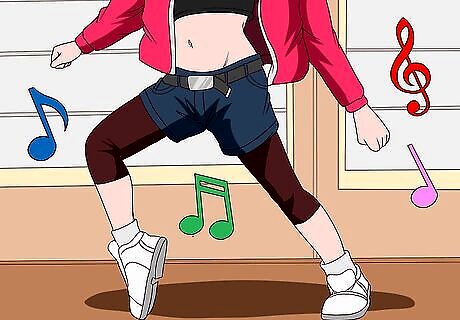
Warm up for 5 minutes before you stretch to prevent injury. When you're active, your Achilles tendons tend to get tighter, and therefore more brittle. That's why it’s important to warm up your body before you do stretches or any strengthening exercises. Do a few minutes of cardio activity before you stretch to protect your body. For instance, you might choose 1 of the following exercises: Walk Cycle Jog Dance March in place
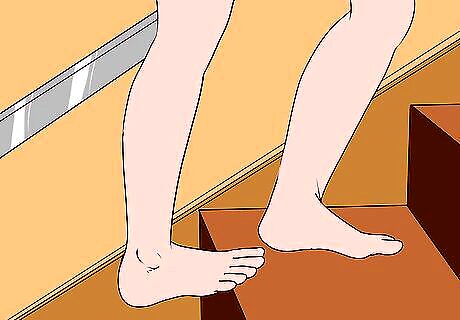
Stretch your calf muscles and Achilles tendons using a step. Stand in front of a step or sturdy box. Place the ball of your right foot on top of the step, then tip your heel down toward the floor until you can feel the stretch along the back of your ankles and calf. Hold for 15-30 seconds, then release and switch sides. Repeat this stretch 2-4 times on each side. Be sure to cool down after you exercise, as well. Variation: Do this exercise with both a straight leg and a bent leg to work more muscles.
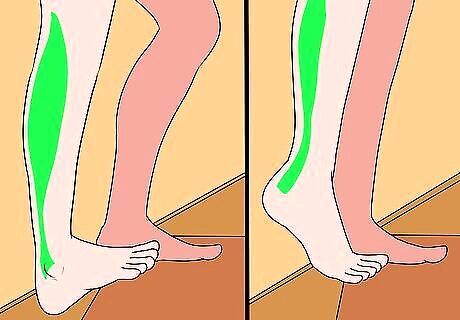
Perform a bilateral heel drop to work your Achilles tendon. Stand on a stair, step stool, or sturdy box, holding onto a railing or wall for support. Move your foot so that the heel of the foot you are working is hanging off the edge of the step. Slowly rise onto the balls of your feet, then go back down. Continue the motion to dip the heel of the foot you're working below the edge of the step as far as it will comfortably go. Any activity that involves using your calf muscles will help strengthen your Achilles tendon. Repeat the exercise 20 times, then switch sides.Variation: After this exercise becomes easy, you can increase the intensity by putting all of the weight on the leg you’re working. Lift your nonworking leg slightly off the stair to shift your weight onto your working leg. However, be sure to hold onto a rail or the wall for support during the entire exercise.
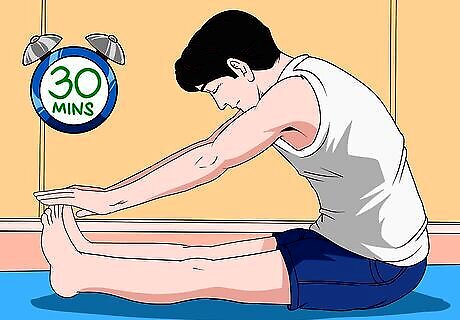
Do a toe stretch to work your Achilles tendon. Sit on the floor or your exercise mat, then bend your knees. Rest your right heel on the floor with your toes pointing up. Lightly grasp your big toe in your hand, then gently pull it toward your body until you feel a stretch along the back of your ankle. Hold for about 15-30 seconds, then release. Repeat the stretch 2-4 times on each side.
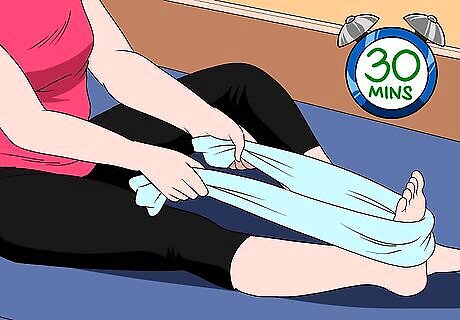
Perform a plantar fascia stretch for both your tendon and calves. Sit on the floor or your exercise mat with your legs straight out in front of you. Wrap a towel around the bottom of your right foot, placing it just under your toes. Grasp the ends of the towel in both hands, positioning your hands over your knees. Gently pull back on the towel so that your foot points slightly toward your body. Hold for 15-30 seconds, then release. Repeat this stretch 2-4 times on each side.
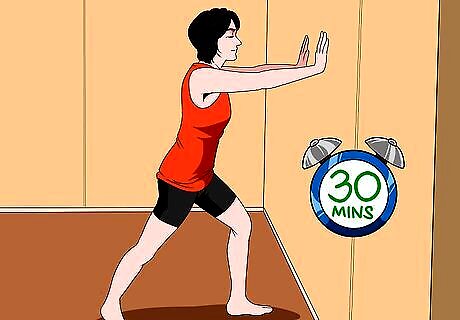
Do calf stretches against a wall for strong, flexible calves. Stand in front of a wall. Lean forward with your arms stretched out and press your hands into the wall. Keeping your right leg straight for balance, bring your left leg slightly forward, bending at your knee. Then, press your hips forward toward the wall and hold the stretch for 10 seconds before releasing. Repeat this stretch 20 times on each side.
Strengthening Your Lower Body
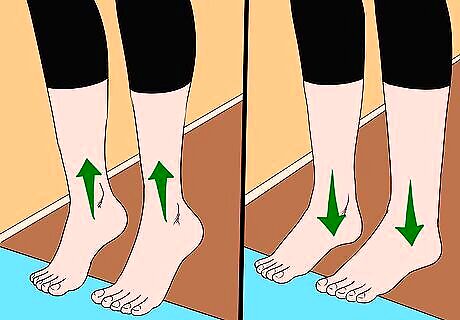
Perform calf raises to work your lower legs. Calf raises will strengthen your calf muscles, which connect to your Achilles tendons. Stand up straight with your feet hip-width apart. Then, slowly rise onto your toes. Hold for 1 second, then lower yourself back down to your starting position. Repeat 20 times. You can make this move more challenging by standing on the edge of a stair or a sturdy box.Variation: Once calf raises no longer feel challenging to you, try incorporating weights. You can hold dumbbells at your hips or overhead as you do your calf raises.
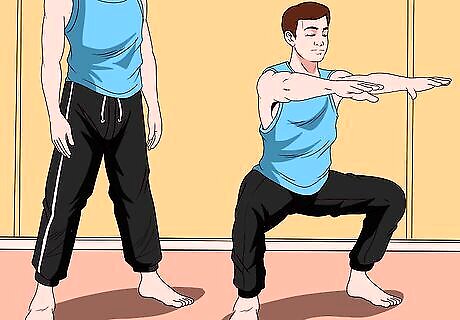
Do squats to work your lower body muscles. Squats are a great lower body workout that can strengthen your entire leg, including your calves. Stand up straight with your legs a little wider than hip-width apart. Slowly lower yourself down as far as you can go. Hold for 1-2 seconds, then rise back to your starting position. Repeat 20 times. Keep your back straight as you do your squats, and don’t let your knees go past your ankles as you squat. Go as far down as you can without feeling pain. As you get better at squats, you’ll be able to go down farther.Variation: Add weights to your squats to build the intensity. You can rest a barbell across your shoulders or hold a set of dumbbells at your hips.
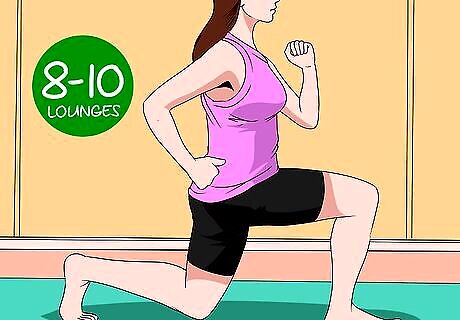
Incorporate lunges to strengthen your legs. Lunges work your entire leg, so they’re great for strengthening your Achilles tendon. Stand up straight with your legs about hip-width apart. Put all of your weight on your left leg, then step out forward with your right leg. Bend both of your knees to lower your body down toward the floor, then hold for 1 second. Slowly push off from the floor through your heels to return to your starting position. Do 8-10 lunges, then switch sides and repeat for the other leg. Don’t let your front knee go out farther than your toe. Keep your back straight throughout the exercise.
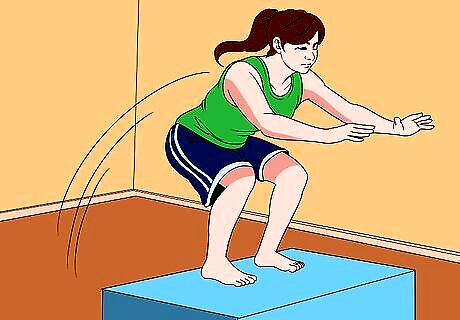
Do box jumps to work your legs and improve flexibility. Stand in front of a sturdy box that can bear your weight. Position your feet so they’re about hip-width apart. Squat down and swing your arms slightly behind you. Then, bring your arms forward as you jump to propel yourself up onto the box. Land in a partially squatting position, then jump back down to your starting position. Do 1-3 sets of 3-5 box jumps.
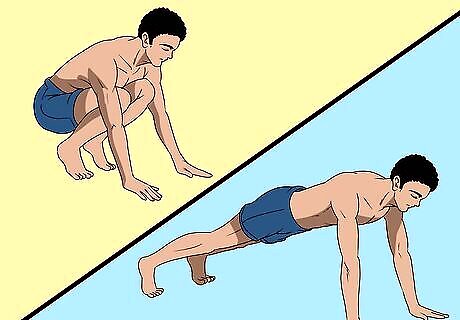
Perform squat thrusts to work your entire body. Squat thrusts work all of your muscles, including your lower body. Stand up straight with your feet hip-width apart and your arms at your sides. Lower yourself into a squat position, then place your hands on the floor directly in front of your body and inside of your feet. Jump back into plank position, landing on the balls of your feet. Jump your feet back to their starting position, rise to a standing position, then reach your arms over your head and jump off of the floor. When you land, start your next rep. Squat thrusts are also called burpees. Do 8-10 squat thrusts at one time. Try to make your motion as explosive as possible. When you’re in plank position, don’t let your back sag or point your butt up into the air. You can modify this exercise by slowing it down. Instead of jumping, step in and out of your plank position. Then, reach up as you come out of your squat thrust, but don’t jump off the floor. Expert Warning: If you don't work out often, avoid exercises with a lot of explosive movements. Instead, focus on conditioning exercises where everything gets strengthened continuously so you don't risk injury as much.
















Comments
0 comment